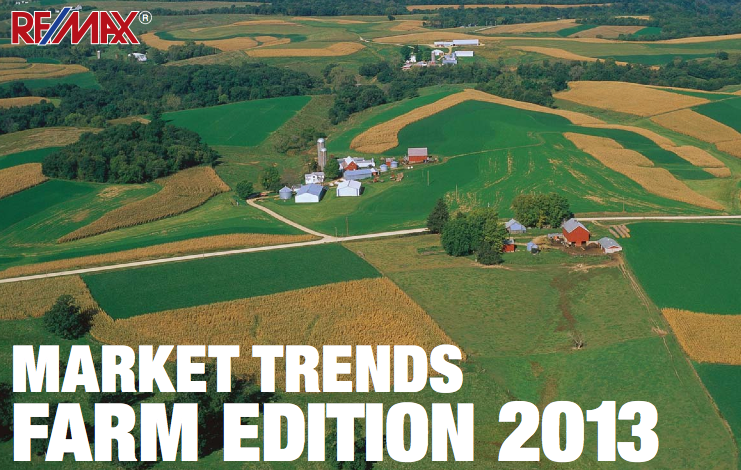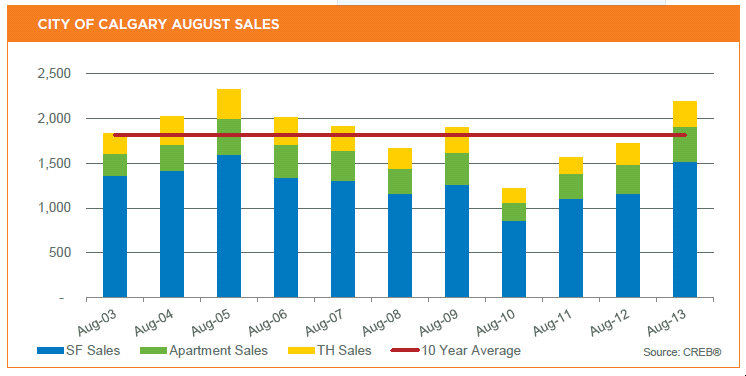Detached prices stabilize in soft market
For the first time in two years, sales activity in October resembled normal levels. City-wide sales totaled 1,644 units, which is an increase of nearly 16 per cent over last year.
“The shift in sales activity this month is likely related to the new mortgage rule changes, inventory gains in the lower price ranges and further price adjustments,” said CREB® chief economist Ann-Marie Lurie. “The combination of all these factors may have encouraged some purchases to take advantage of the market conditions, particularly in the lower price ranges. However, with several factors at play, the monthly shift in demand may be temporary and will need to be monitored over the next several months.”
Sales activity rose across all product types in comparison to last year, but the largest gain in sales occurred in the detached sector at 18 per cent.
There was a noticeable shift in sales activity by price range in October. In the detached market, homes priced between $300,000 and $400,000 saw the largest improvement in sales, while attached and apartment sales growth was mainly occurring in the lower price ranges.
“This year has been a challenge for many sellers,” said CREB® president Cliff Stevenson. “So when we have a rise in sales, it means more buyers got into the market and more sellers got out, which is a positive for consumers on both sides of the transaction.”
“Sales activity changed direction in October, but we need to see some consistency next month and the month after to call it a trend,” adds Stevenson. “For now it’s a nice building block.”
Despite the monthly rise, year-to-date sales activity in all sectors remained lower than last year’s levels and well below longer term trends. In fact, year-to-date sales activity has totaled 15,642 units, which is 6.3 per cent below last year’s levels. While increased activity in the lower price ranges had a greater impact on the average and median price, benchmark prices once again edged down in October.
The city-wide unadjusted benchmark price totaled $438,900, or 0.34 per cent below last month and four per cent below last year’s levels.
Since the start of the downturn, home prices have declined from a low of 3.8 per cent in the detached market to a high of 9.4 per cent in the apartment condominium sector. And, despite the rise in October sales, monthly prices continued to decline for most product types in the market.
Click on the following link to view the full .pdf report! October-2016-statistics-package-for-the-city-of-calgary

Click on this following link to view the full .pdf report for the Regional Statistics: october-2016-regional-statistics-package-for-calgary-and-area
housing report
Alberta housing market a standout performer
Underlying driver is a robust economy
Alberta has emerged as a standout performer in Canada’s housing market and while a slowdown in Canada’s broader housing market is underway, the province’s housing sector has been heating up, says a new report.
The Alberta Treasury Board and Finance’s Economic Spotlight said housing starts continue to trend higher, prices are accelerating, and the resale market remains firmly in seller’s territory in the province.
“The underlying driver is a robust economy. Alberta’s economy has grown at double the rate of the Canadian average over the past three years, and accounted for a disproportionately high share of the nation’s new jobs,” said the report. “Job opportunities have lured migrants from other provinces, creating a need for new housing, while rising wages have kept affordability in check.
“Record inflows of migrants have also resulted in a tighter rental and resale housing market, pushing activity and prices higher. On the supply side, the flooding in Southern Alberta has reduced the stock of available homes, adding further tightness to the market.”
The report said Alberta’s low unemployment rate and higher average wages will continue to draw inmigrants, both from within and outside Canada.
“These new migrants tend to be younger, workingaged adults,” it said. “The transitioning of these new young migrants from rental accommodations into home ownership will be a primary driver in the housing market demand. Higher wages will also encourage continued household formation and home ownership.
“Net migration is forecast to remain high over the near term and will be an important driver of housing demand. After spiking by 3.5 per cent in 2013, the largest increase since 1981, Alberta’s population growth is forecast to ease to a stillstrong 2.9 per cent in 2014 before gradually moving to 2.0 per cent by 2017.”
The report said housing is expected to remain a vibrant part of the Alberta economy, but there are risks to the outlook.
With a commodity-driven economy, a slowdown in emerging markets could lower prices and impact Alberta, leading to lower in-migration and lower housing demand.
The report also said housing affordability is also a risk and an unexpected shift in the trend of higher wages and lower interest rates would impact the market.
“On the upside, the housing market could also strengthen more than expected. A stronger-than-forecast expansion in Alberta could lead to more in-migration, and put further pressure on housing demand,” said the government report.
“The housing market in Alberta performed exceptionally well through 2013 and is forecast to strengthen further in 2014, at a time when the national housing market is expected to slow or level off.”
In another report, Diana Petramala, economist with TD Economics, said “Calgary is one market that appears to be more balanced than the rest and has more upward potential.”
By Mario Toneguzzi, Calgary Herald
Market Trends: Farm Edition 2013
 Click here on the image above to view the full report: Canada wide!
Click here on the image above to view the full report: Canada wide!
Central Alberta
Southern Alberta
CALGARY REGIONAL HOUSING MARKET STATISTICS for August 2013
SUMMER SALES STAY STRONG

Seller’s market conditions persist, pushing up prices
(click on the photo above to download the full report)
Residential sales within city limits totaled 2,196 units, an 27.5 per cent increase over 2012 and 8.7 per cent on a year-to-date basis.
The level of transactions was well above long-term trends for the month, mostly due to improved activity in the single-family sector. However, on a year-to-date basis, activity is only slightly higher than expectations.
“The sales have been limited by the need for more resale listings,” said CREB® President Becky Walters. “However, August did see more new listings than last year, giving buyers more choice.”
August new listings recorded a year-over-year improvement of 7.4 per cent. While seller’s market conditions persist and total inventory levels keep falling, improvement in new listings helped prevent further tightening in the market despite the sales growth.
Single-family sales totaled 1,517 units in August, a 30 per cent increase over the previous year. Despite strong sales in the past couple of months, year-to-date sales activity has grown by 5.4 per cent, slightly stronger than anticipated.
Click on the following link to download the full report of the Monthly Housing Statistics for August.
City's housing affordability 'among better in Canada'
Calgary’s housing market appears to have weathered the worst floods in memory with the second-strongest quarterly sales gain in four years, says the Royal Bank.
“A strong provincial economy, solid labour market, fast-rising population, and attractive affordability continue to fuel demand for Calgary housing,” said the bank’s latest Housing Trends and Affordability Report, to be released Tuesday.
The RBC report, which measured the April to June period, said monthly resale activity increased for six straight months, including in June (rising 1.1 per cent month-overmonth) and July (up 3.1 per cent). On a quarterly basis, home resales rose 12 per cent.
“While prices recently embarked on a more steeply upward trajectory, the effect of faster-rising prices has yet to undermine affordability in any material way,” said RBC. “In fact, affordability levels in Calgary continue to be among the better in Canada.”
The RBC affordability index determines the proportion of median pretax household income needed to service the cost of mortgage payments, property taxes and utilities.
Its measures for Calgary showed little movement in the second quarter, with two-storey homes rising by 0.5 percentage points to 33.6 per cent, while condominium apartments edged lower by 0.2 percentage points to 19.4 per cent.
And while the report cautions home ownership has become less affordable for the average Canadian, RBC said Alberta homebuyers continued to enjoy a relatively affordable housing market.
“Despite the fact that the market has kicked into higher gear since spring – thereby boosting prices and increasing ownership costs – Alberta continues to be a relatively affordable market,” said Craig Wright, senior vice-president and chief economist with RBC. “We will likely see some disruptions in market activity trickle through in summer data from the floods in southern Alberta; however, we anticipate the strong provincial economy will endure, supporting further housing growth in 2014.”
Nationally, during the second quarter, affordability measures rose for two of the three categories of homes tracked. RBC’s measure for the detached bungalow rose 0.3 percentage points and for the standard two-storey home rose 0.4 percentage points to 42.7 per cent and 48.4 per cent, respectively. The measure for the standard condominium was unchanged at 27.9 per cent.
Vancouver’s affordability measure gained 2.2 points to 82.1 on a detached bungalow, while Toronto’s increased half a point to 54.5.





